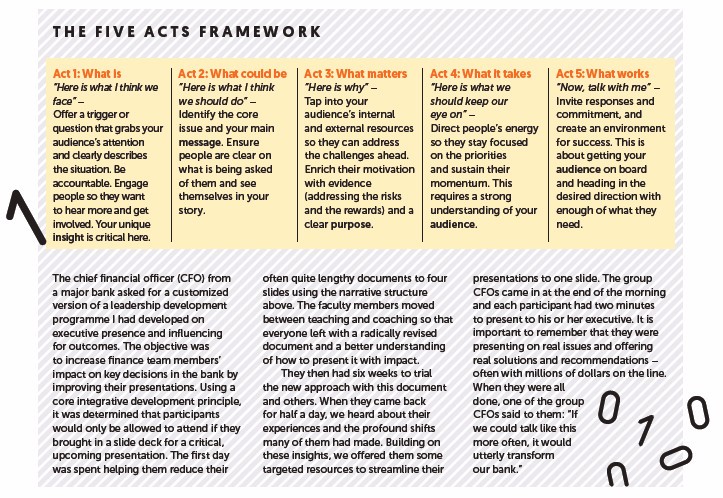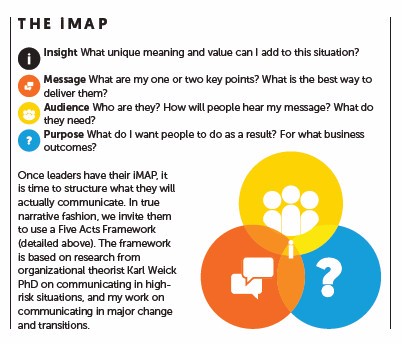Narrative leadership is about turning data into stories so laymen will hear you, says David Drake
[button type=”large” color=”black” rounded=”1″ link=”http://issuu.com/revistabibliodiversidad/docs/dialogue_10_q1_2016_full_book/48″ ]READ THE FULL GRAPHIC VERSION[/button]
Forty-three. It’s just a number. It only makes sense if it is placed in context: for example, the projected decrease in revenue, by percentage, in a key product line. Data is never enough on its own. People tend to make decisions based on stories about numbers rather than the numbers themselves.
Reactions to the example above will be based on what people believe to be the underlying cause of the decrease in revenue; what they think that means; and what should be done about it. Technical and finance staff are hired for their computational and/ or analytical skills, but their success is ultimately determined by how well they communicate their data and influence the stories that drive its use.
This calls for greater narrative leadership. My colleague at the Center for Narrative Coaching & Leadership, Geoff Mead, describes it as the ability to “tell a coherent and convincing story that acknowledges where an organization has come from, recognizes the realities of the present situation – and offers a worthwhile future”.
I would factor in an awareness of one’s own stories as they relate to the situation and an ability a) to help those involved connect the dots between the past, present and future; and b) to connect their stories, the organization’s stories and the market’s and customers’ stories.
In teaching narrative leadership, I focus on three main objectives…
1 Transparency – helping leaders create a personal decision framework to navigate the often murky waters of what story is told to whom.
2 Sensemaking – helping leaders understand the importance of both informal and formal stories in an organization and its networks.
3 Influence – helping leaders find their authentic voice, truly hear the voices of others, and connect these voices to create a shared narrative people can get behind.
This often requires leaders in technical roles like finance, to shift from merely conveying data-based information to:
- Providing meaningful, actionable insights
- Creating a positive impact in the moment
- Influencing and implementing the best outcomes
When this goes well, people can better contribute to the organization’s success. When any element is missing, their efforts become splintered.
We use the iMap tool in our programmes (see right). It is a simple way of planning an important communication, starting with the key insight around which the rest is built. It is an iterative process, in that as your understanding of any of the four elements deepens, it affects and enriches the others. I recently used this tool with the chief executive and more than 300 leaders and change agents at a major bank. It helped them communicate a dramatically new corporate vision.
Dr David Drake is founder and director of the Center for Narrative Coaching & Leadership in the San Francisco Bay Area and a global faculty member for Duke CE Learn more at www.narrativecoaching.com



